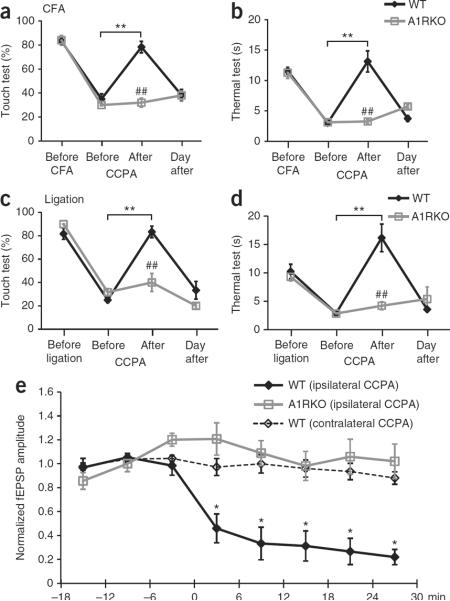Figure 2.
Anti-nociceptive effects of adenosine A1 receptors. (a,b) Comparison of the effect of CCPA on mechanical allodynia (touch test, a) and thermal hyperalgesia (thermal test, b) in wild-type (WT, black) and A1 receptor knockout (A1RKO, gray) mice. CFA was administered in the right paw at day 0. The adenosine A1 receptor agonist CCPA (0.1 mM, 20 μl) was injected into the ipsilateral (right) Zusanli point (ST36) at day 4. All of the mice were evaluated ~10 min after the CCPA injection (**P < 0.01, Tukey-Kramer test compared with before CCPA; ##P < 0.01, comparison of wild type and A1RKO at each time point; n = 5−9). (c,d) Effect of CCPA on mechanical (c) and thermal hypersensitivity (d) in wild-type and A1RKO mice with neuropathic pain evoked by partial ligation of the right leg ischias nerve at day 0 and CCPA administered at day 6 (n = 6). The sensitivity of the contralateral (control) leg to mechanical and thermal stimulation from these experiments is shown in Supplementary Figure 1. (e) The amplitude of fEPSP in left anterior cingulate cortex evoked by painful stimulation in the right foot. The effect of CCPA (0.1 mM, 20 μl, at 0 min) injected in the ipsilateral (right) or the contralateral (left) Zusanli point on fEPSP is plotted as a function of time in wild-type and A1RKO mice. (*P < 0.01, Tukey-Kramer test compared with the −18- to −12-min time point, n = 4−12). Error bars indicate s.e.m.

